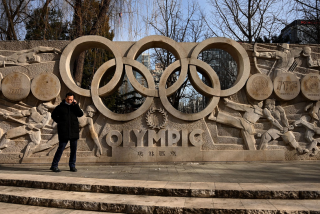Hey, Ralph Lauren, sweatshops aren’t chic
Ralph Lauren, the crown prince of preppy, received more than $30 million in compensation in 2011 from the corporation he founded and of which he and his family control about 73%. He is on the Forbes list of billionaires. The Ralph Lauren firm physically produces nothing: It is a design, marketing and licensing operation that hires factories to make its stuff. The company has had the U.S. Olympic team deal since 2008. A men’s team shirt costs $425 and a woman’s skirt $498. The beret that makes the athletes look like recruits for the U.S. Special Forces and a T-shirt each cost $55. Perhaps it is the high unemployment rate or the in-your-face patriotism induced by an election year, but the news that Lauren’s prep-chic outfits are made in China has produced a rare bipartisan storm of criticism.
Lost in the wind of words is what should be central to the question of sourcing: conditions for the workers. If China’s workers were sharing in the full fruits of growth, we would have a much smaller volume of American clothing made there. As it is, more than 98% of the dollar value of the Ralph Lauren clothing line is made abroad, much of it in China.
Without more disclosure from the company as to which firms and factories make its goods, we can know only that Chinese apparel workers earn, officially, somewhere between 93 cents to just over $1 an hour; unofficially, they are often paid less than the official minimum, which varies by province and city. Days off are rare, despite laws that entitle them to one day off a week. A late 2011 investigation by China Labor Watch of factories producing for major American brands found employees who said they worked 30 days a month. There is a reason for this: Because wages fall so far behind rising living costs, workers need overtime pay to survive.
Many other abuses are common in China’s export factories. Workers are housed in dorms where conditions are often crowded and the food poor. The first month’s wages are often withheld, so if the workers quit because of bad conditions, they must forfeit a month’s wages. There is no right to form independent unions in China; only theCommunist Party’sAll-China Federation of Trade Unions is permitted, and it is usually a part of management, not responsible (or even known) to the workers. Exhaustion haunts the factory floors of China’s export sector, and since last year, allegations of suicides caused by desperation have received worldwide attention.
Ralph Lauren now says it will produce its 2014 Winter Olympics uniforms in the United States — immediately giving the lie to those who shrugged off the complaints by saying we can’t make this stuff here. There are 160,000 U.S. apparel industry workers who would love to have the chance to prove the naysayers wrong.
In the meantime, Ralph Lauren and the U.S. Olympic Committee could do some simple things to remove the shadow over their respective images. The company could disclose the locations where the Olympic teams’ clothing is made. It could invite the premier workers’ rights monitoring institution, the Worker Rights Consortium, to inspect these factories. It could agree to abide by the Sweatfree Purchasing Consortium’s Model Code of Conduct, which has three states (Maine, New York and Pennsylvania) and 16 cities (including Los Angeles, San Francisco, Milwaukee and Seattle) committed to fair competition through sweatshop-free purchasing. (Full disclosure: I am an unpaid member of the Sweatfree Purchasing Consortium board of directors and an unpaid member of the Advisory Committee to the Worker Rights Consortium.) The U.S. Olympic Committee, as a quasi-public body, could join one or both consortiums to make sure its logo gear is sweatshop free, wherever it is made.
Olympic athletes will wear their gear at the peak of world attention, clothed by a billionaire’s company hired by a committee of notables. Toiling at the bottom of the pyramid, for meager pay and under terrible conditions, are those who cut, sew, press and pack the clothing. “Faster, Higher, Stronger”: The Olympic motto might be a good pledge for improved labor conditions in the world’s sweatshops.
Robert J.S. Ross, a professor of sociology and director of the International Studies Stream program at Clark University in Worcester, Mass., is the author of “Slaves to Fashion: Poverty and Abuse in the New Sweatshops.”
More to Read
A cure for the common opinion
Get thought-provoking perspectives with our weekly newsletter.
You may occasionally receive promotional content from the Los Angeles Times.










